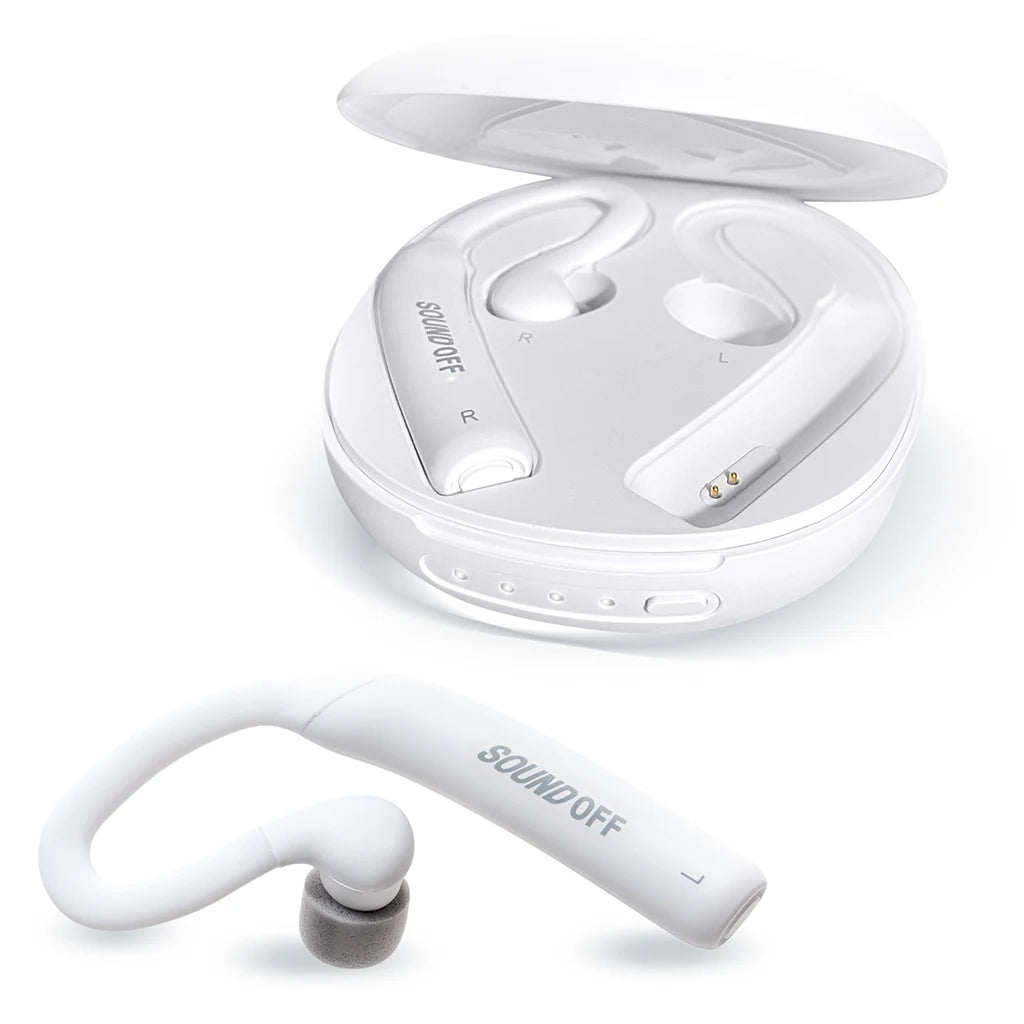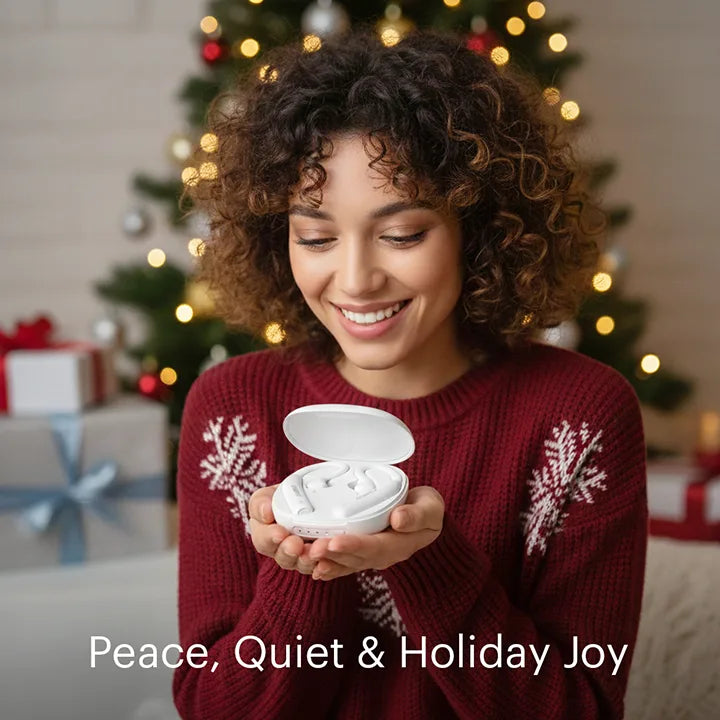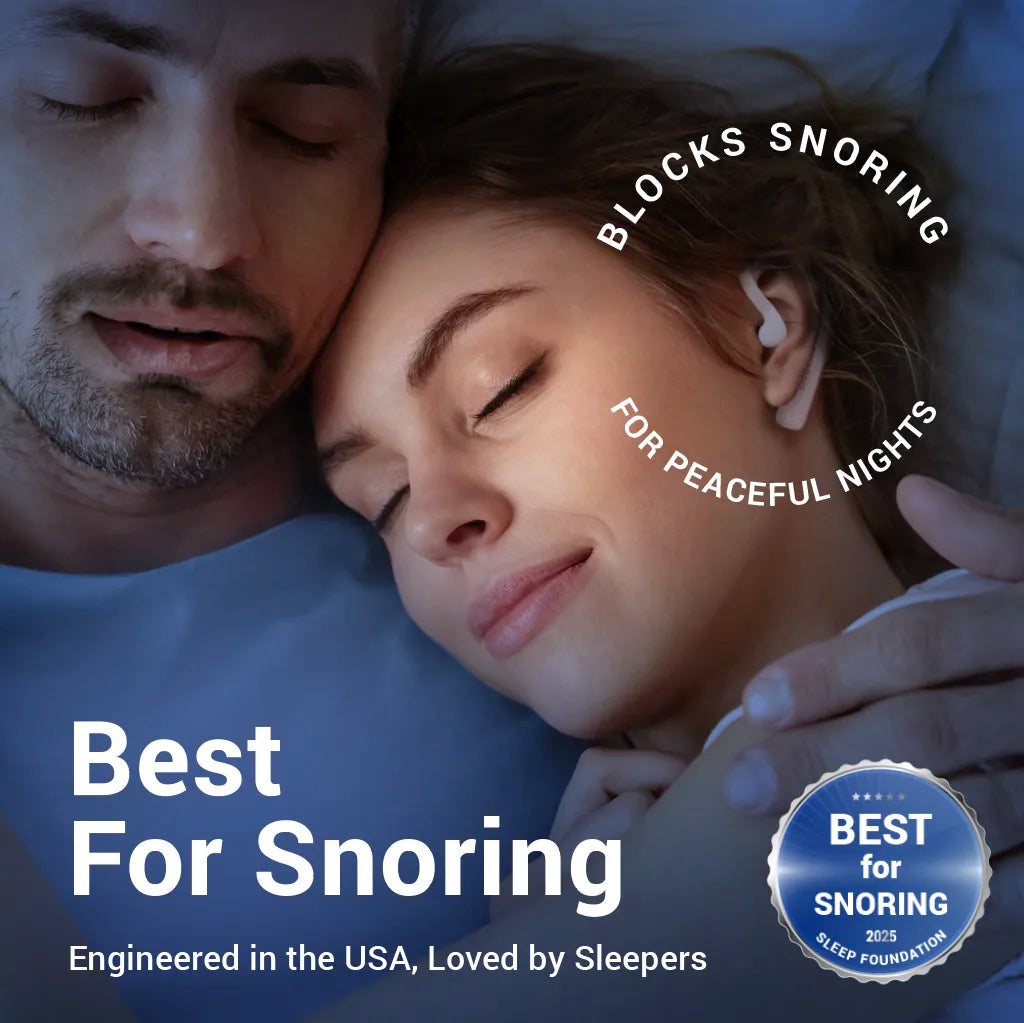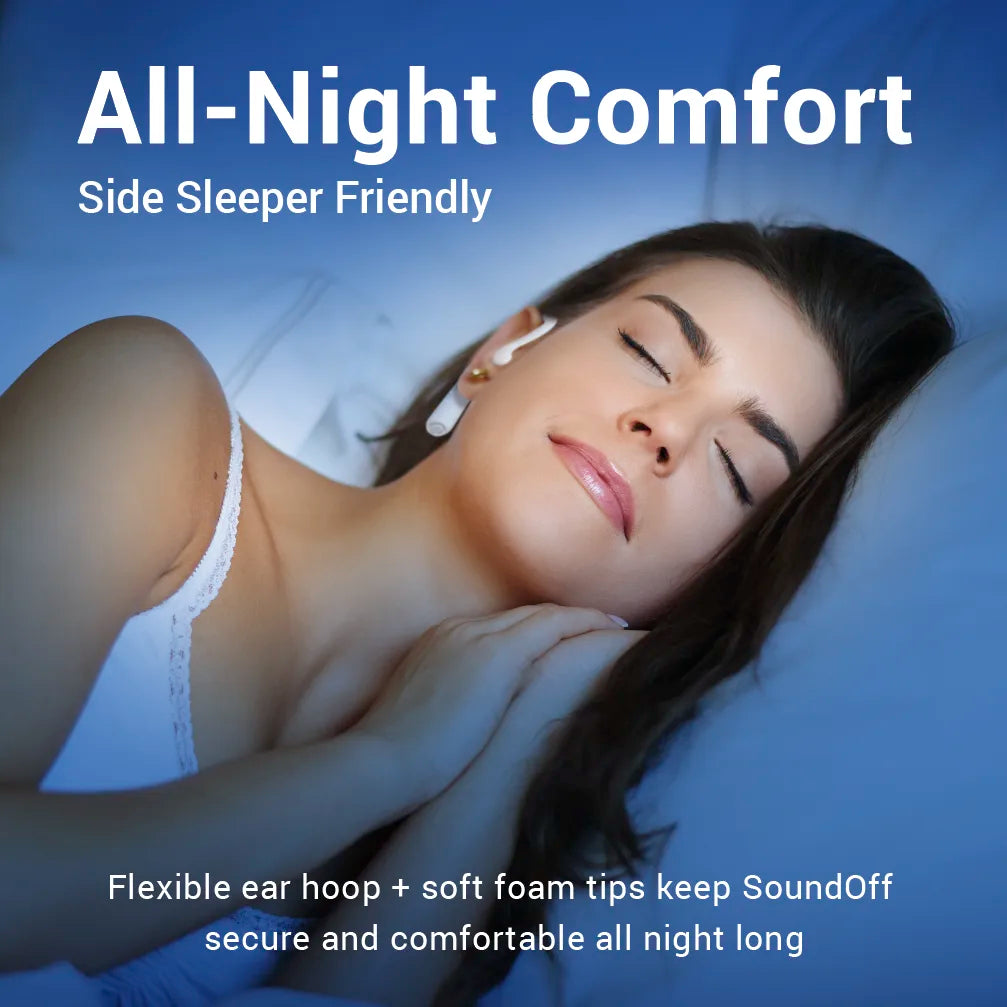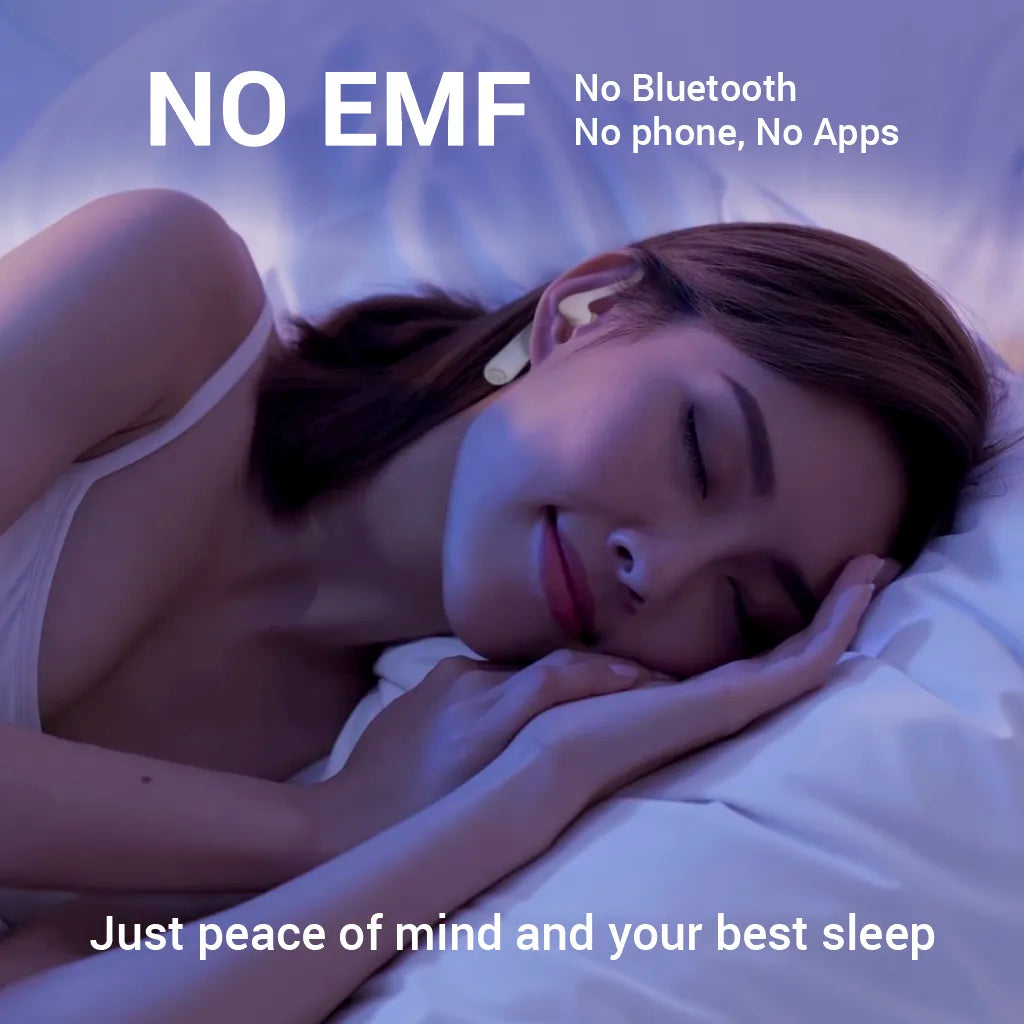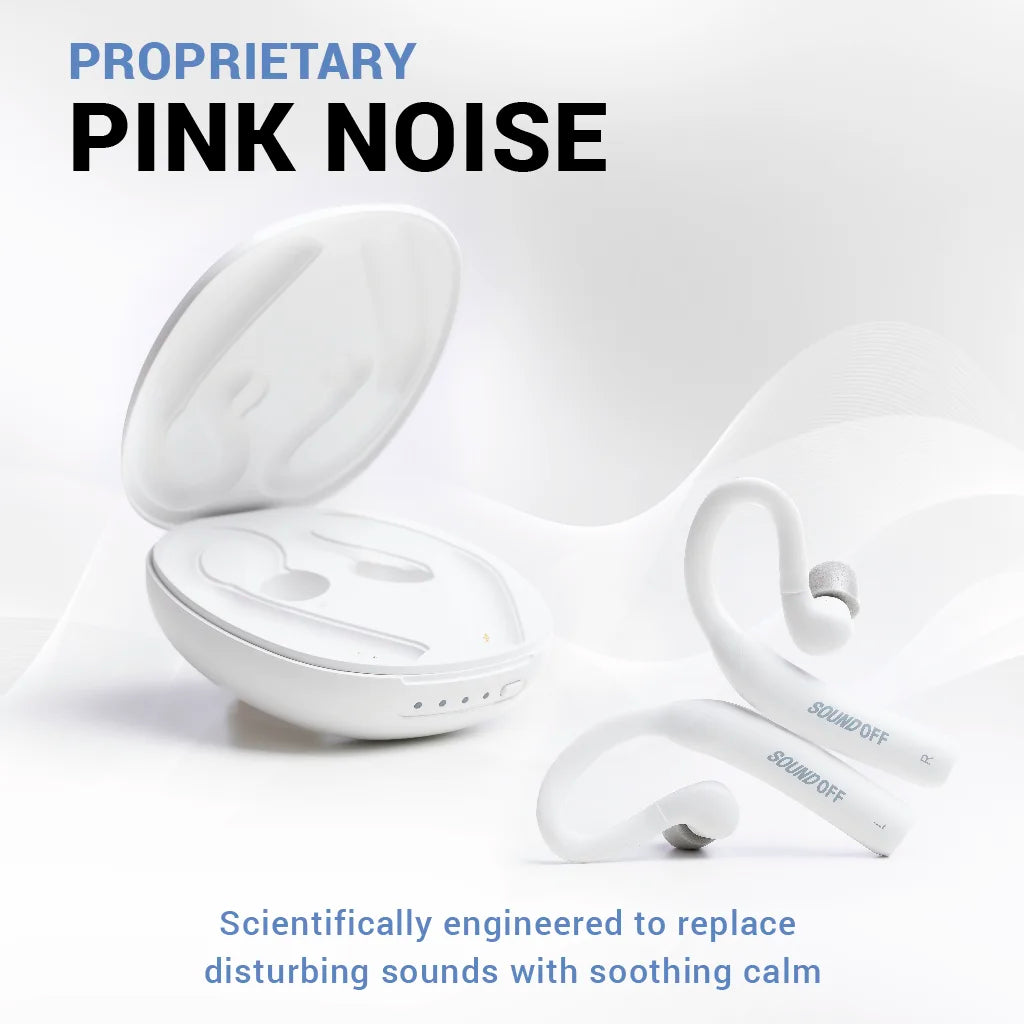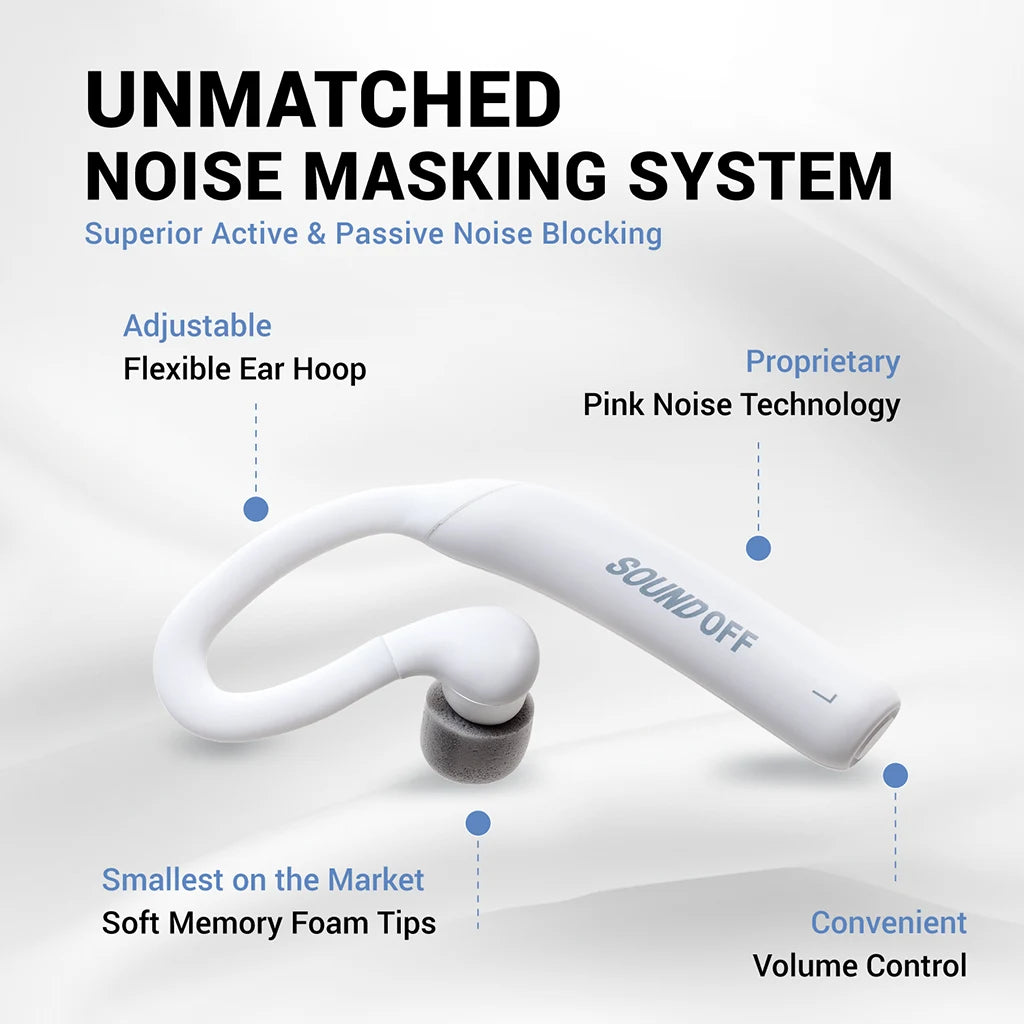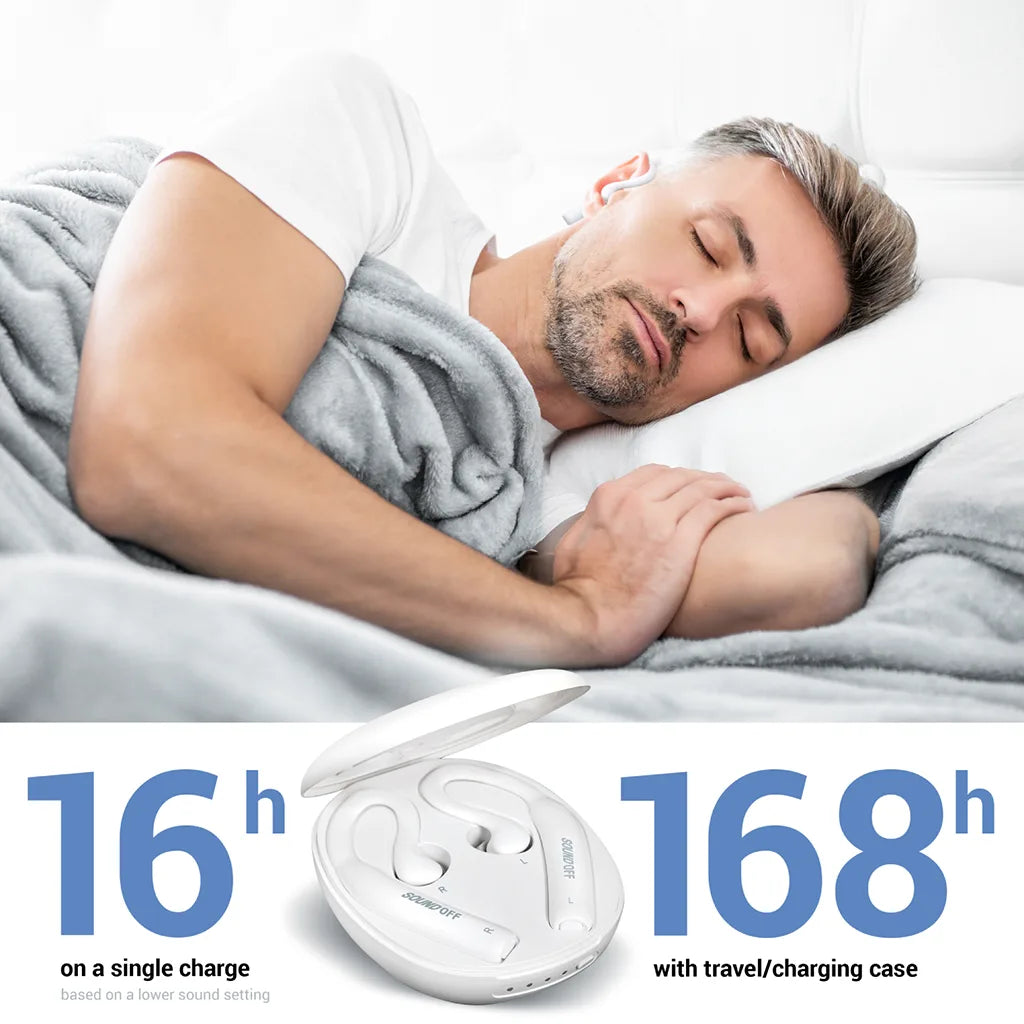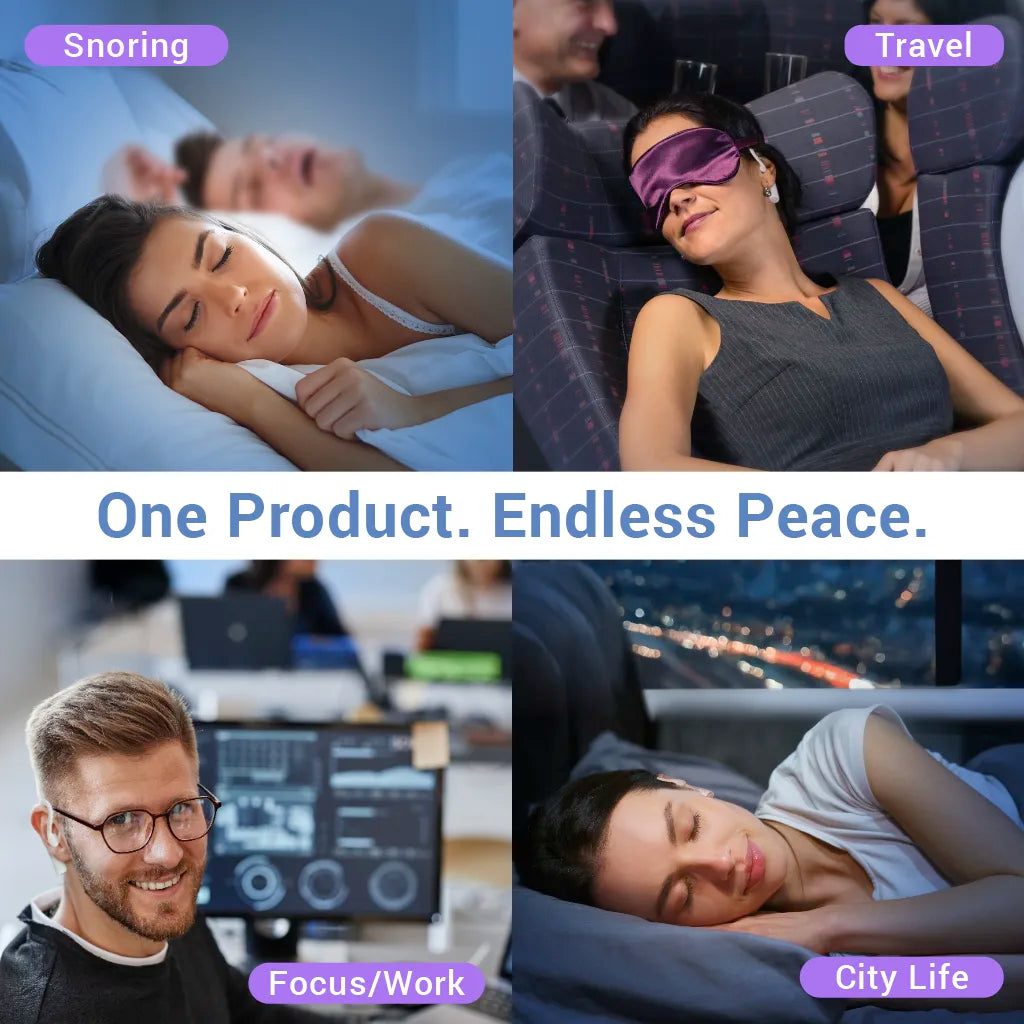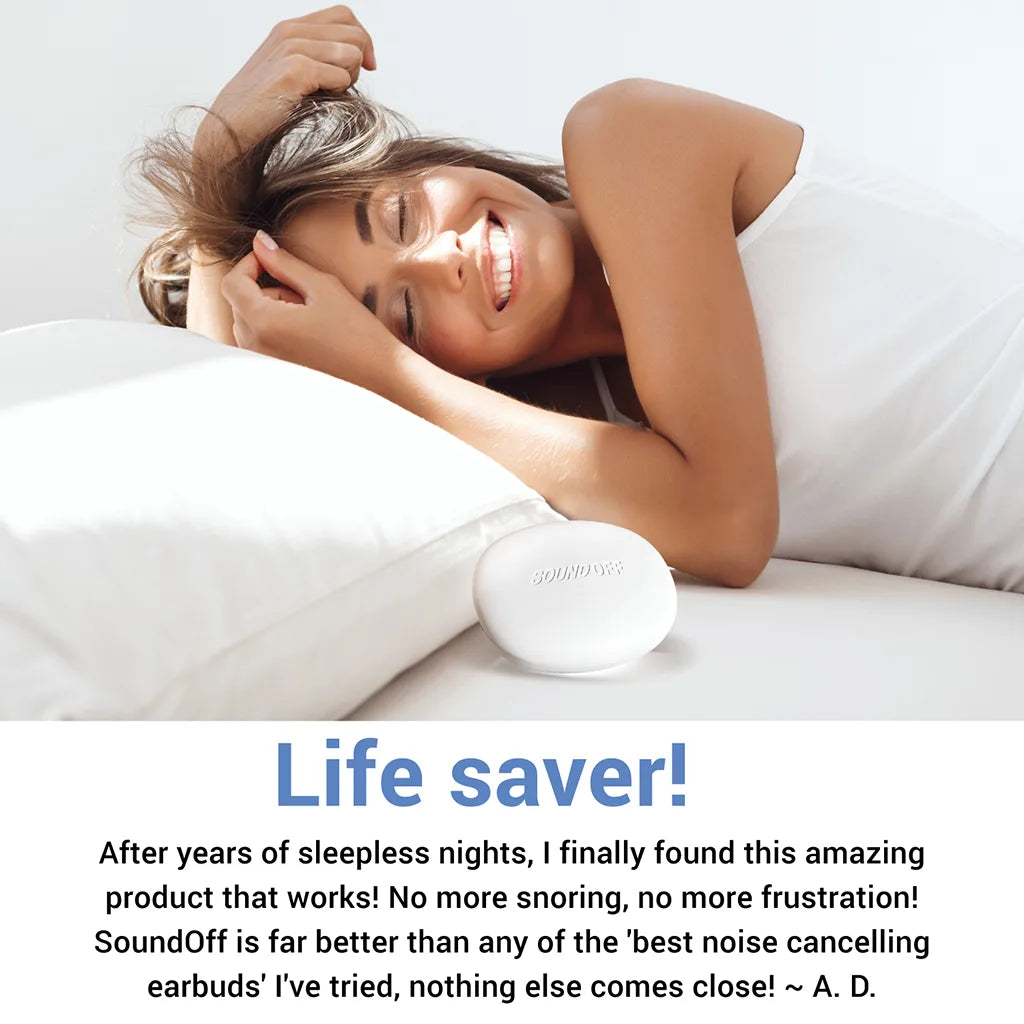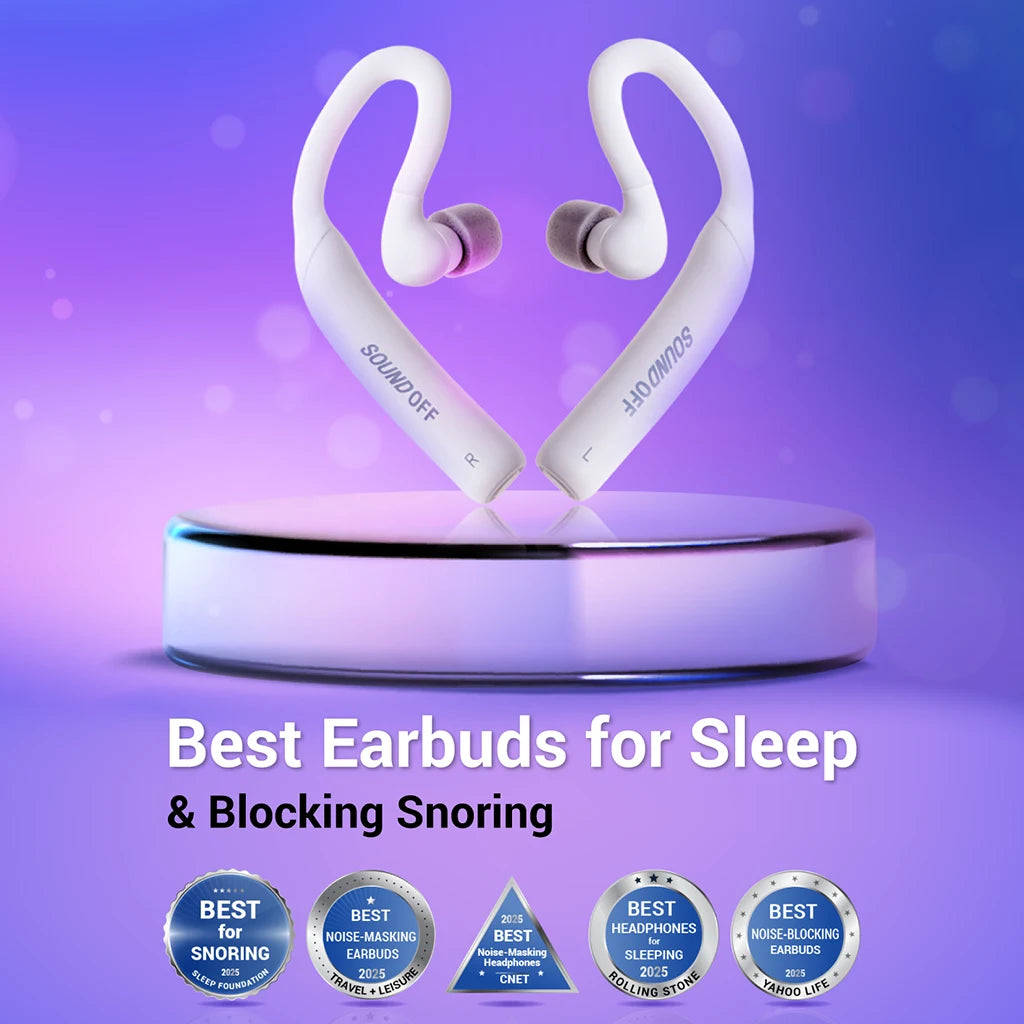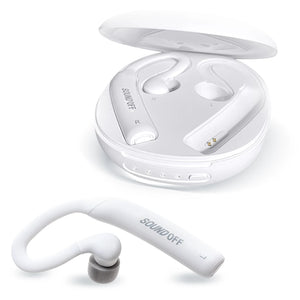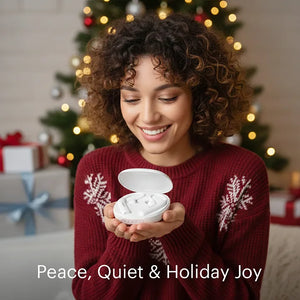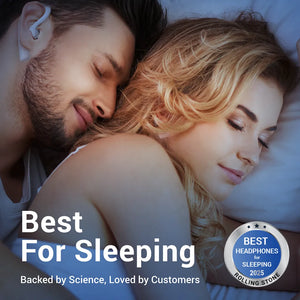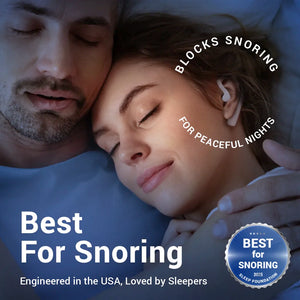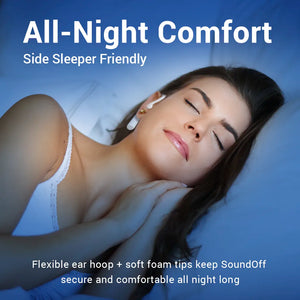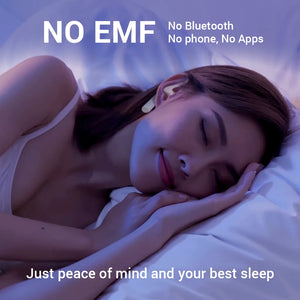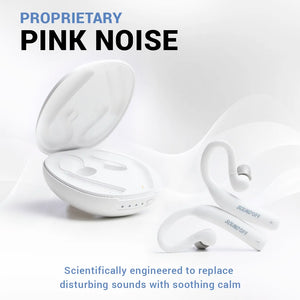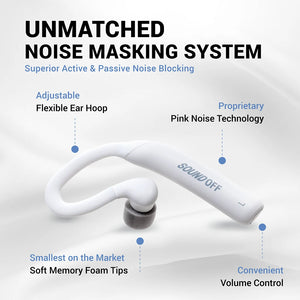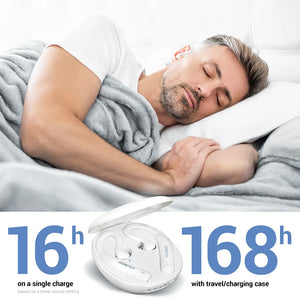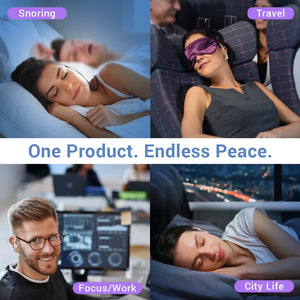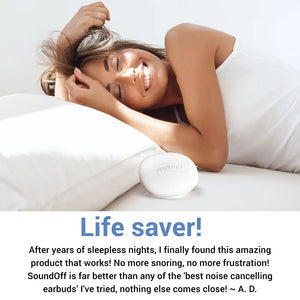Noise Masking vs Noise Cancelling
What’s the difference? Noise Masking covers up or masks unwanted sounds with a pleasant sound, so you hear the pleasant sound and you no longer hear the unwanted sound. With SoundOff you hear a soothing, calming Pink Noise that will lull you to sleep.
Noise Cancelling uses technology to cancel out a sound. The problem is Noise Cancelling does not cancel ALL sound. You still hear the disrupting sound--it just isn’t as loud.
Imagine you can’t sleep because of your neighbor’s barking dog. You try using noise cancelling headphones... but you’re still awake.
Why?
You’re still hearing the dog barking!
And now that you’re hyper-focused on the noise, you’re also hearing other neighborhood noises like a car motor running and the base on someone’s stereo.
And the drip, drip, drip of the bathroom faucet or the refrigerator hum...
ANC Technologies
A few different Active Noise Cancelling (ANC) technologies exist, but the gist is that your headphones or earbuds listen to the external world for incoming sounds. When the ANC tech detects an incoming sound, a minute noise-cancellation speaker emits a second soundwave with the same frequency, but opposite amplitude, to neutralize the sound.
Active Noise Cancellation reduces the sounds of the outside world via your headphones or earbuds, allowing you to listen to music, podcasts, or films without disturbance. It can also reduce the psychological fatigue of listening to loud, low frequency, noise for extended periods of time.
Bottom line, with noise cancelling, you still hear the sound-- your ear simply interprets it differently. A loud hum is a quieter hum. If you are on an airplane, you will still hear a (less loud) airplane engine. If your neighbor's dog is barking, you still hear the barking dog, it’s just not as loud.
But, is noise cancelling effective for sleeping through snoring and other noises that interrupt your sleep?
Does ANC Work for All Sound Types?
Active noise-cancelling headphones and earbuds do not work for all types of sound. For example, short, loud sounds (called impulses in acoustics) are difficult for active noise control circuits to deal with.
To cancel sound, the system needs to be able to predict incoming noise waveforms; otherwise it will be too late to process and negate the noise. Because sounds like snore bursts, car alarms, and thunderclaps are sudden and unexpected, they defeat the ANC circuit’s capabilities.
Continuous sounds are easiest for such systems to deal with--sounds that are predictable--like the drone of an airplane engine--which is what they were originally invented for.
ANC technology was introduced to the airline industry in 1986. It was specifically designed to protect pilots’ hearing and improve cockpit communications. Airlines soon began offering noise cancelling headphones in their first-class sections to help passengers block out the engine hum.
Today’s enhanced ANC headphone technology is effective at blocking out about 75% of that continuous aircraft cabin noise.
While great for softening background sounds so you can enjoy listening to music, don’t count on noise cancelling when silence really counts.
If you are hoping your noise cancelling headphones will magically erase the intermittent sound of your snoring partner, sirens in the middle of the night or hotel noise like the elevator or doors slamming at 1:00AM, you might be in for disappointment.
Noise Masking
This is where Noise Masking comes in. With Noise Masking you don’t hear the snoring, the sounds of the city, or dogs barking next door. Instead, you hear the “masking sound”. If you are trying to sleep, it needs to be a consistent and relaxing sound that your brain just tunes out after a while.
Soundoff Earbuds with Proprietary Pink Noise for the Best Sleep
With SoundOff Noise Masking earbuds you hear our proprietary soothing Pink Noise. This custom shaped Pink Noise was created by a PhD in psychoacoustics.
He designed it to specifically mask snoring by taking out some of the higher tones and adding in some lower tones (snoring typically consists of lower tones).
The human ear perceives the deeper tones in Pink Noise to be more pleasant than the higher-pitched tones associated with white noise.
Turns out, our Pink Noise masks almost any sound -- from traffic noise -- to thunderstorms -- as well as that snoring grizzly bear in your bed.
Our customers say our Pink Noise “lulls” them to sleep and tell us they sleep better than they have slept in years!
They also tell us they don’t just use SoundOff earbuds for sleep...
Unexpected Benefits
Today, experts who study the effects of noise on our bodies and minds, recognize benefits of noise masking beyond its capability to help us get a better night’s sleep. Here are some additional ways noise masking impacts our lives...
Overall Well-Being
A harmonious sonic environment greatly affects overall well-being. Noise masking helps regulate the sounds surrounding you; allowing you to create a space that encourages calmness, creativity, and a sense you’re in control of your world.
Noise masking is safe as well as effective. Pink Noise is a great choice for the noise masking sound because it emulates nature sounds that we find calming like a waterfall or rustling leaves. This can help ease stress without need for sleep aids or anxiety medications.
The Neurological Benefits of Noise Masking
Research shows noise masking affects the brain’s neural pathways, promoting relaxation, and reducing stress. It can alter our perception of our auditory environment by diverting attention to the “masking sound” rather than the disruptive noise.
Improved moods and a generally more positive outlook on life are noted psychological benefits of using noise masking to control the noises that increasingly permeate our environments and disrupt our peace of mind.
Key Noise Masking Benefits that go Beyond Sleep...
#1 -- Enhanced Focus and Boosted Productivity
Noise masking is particularly helpful in loud office settings and while trying to study in chaotic environments. It helps you concentrate on tasks by creating a consistent acoustic background to drown out distracting, intermittent noise.
This tends to lead to increased productivity and more efficient work results.
It also lets you work more efficiently from home. Without the noise of the gardeners, garbage trucks, and other people’s conversation, you can focus on and complete tasks faster and more easily.
Inability to focus affects productivity, both on an individual and organizational level.
A university of California, Irvine study showed it takes an average of 23 minutes for individuals to fully regain their focus after they have been distracted.
As workers struggle to repeatedly shift their attention from one point to another, they typically spend more time completing their tasks -- meaning they spend more time working while getting less done. This lost productivity translates to a loss of billions of dollars annually.
Employees who are surrounded by distractions have much more trouble concentrating and are far less productive. Whereas workers with lower levels of distraction show higher levels of concentration and report feeling more productive, engaged, and satisfied with their job.
#2 -- Reduced Stress and Anxiety
Noisy environments can quickly overwhelm the senses. Continuous exposure to disruptive noises elevates stress levels which affects us physically, mentally, and emotionally.
Noise masking technology provides a steady sound to counteract the adverse effects of all that noise and the stress it brings.
Using noise masking earbuds will silence the many distracting sounds that interrupt your daily life and stress you out.
And, by reducing your stress levels, you can look forward to happier, more productive days -- and nights of peaceful, more restorative sleep.
Noise Masking can help anxious individuals create a more peaceful and controlled aural backdrop which promotes better sleep, boosts focus for greater productivity, and allows them to just relax and enjoy life more. We can all use more of that, right?
#3 -- Relief for Sensory Overload
Some of us are hypersensitive to environmental stimuli, and this can lead to sensory overload, creating anxiety and depression. Noise masking creates a stable and predictable auditory environment -- which helps those with sensory sensitivities manage the way they react to external stimuli.
#4 -- Tinnitus Management
Tinnitus, which is characterized by the perception of a ringing or buzzing sound in the ears is a problem for millions of Americans.
While there is no known cure, noise masking may provide relief for some tinnitus sufferers by diverting attention away from the phantom sounds and diminishing their perceived intensity.
Noise masking is an empowering tool. It allows you to create a more peaceful, controlled auditory environment. Thus, increasing your ability to sleep better, work better, and enjoy life more.
Learn More about Noise Masking and our Pink Noise.







